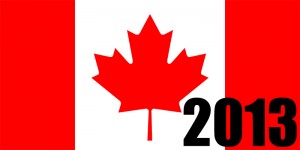The current population of Canada is estimated to be approximately 34,881,000 people, which is an increase of about 1.2% from the last record of population. Historically, the population of the country has been greater than the population of Australia, but has oscillated in terms of the population of California. Up until 1984, the population of Canada had been greater than the population of California. However, ever since then, California’s population is greater than the population of Canada. Based on the total land area and the total population of the country, the population density of Canada is estimated to be about 9.05 people per square mile.
Demographics of Canada
The largest ethnic group in Canada is those that are native Canadian, making up about 32% of the population. Those that identify as English make up about 21% of the population. Then, the French ethnicity makes up the next largest group, making up about 15.8% of the population. The rest of the population is Scottish, Irish, German, Italian, Chinese, Ukrainian, Dutch, and of First Nations. The population of Canada is as much of a melting pot as America is. The official languages of the country are Canadian English and Canadian French. The two languages have equal rights in all legal matters or business matters.
Religion in Canada
The largest religious group in Canada is the Roman Catholic Church, which makes up about 39% of the population. The United Church of Christ makes up about 6% of the population; the Anglican Church makes up about 5% of the population. The largest non-Christian religion is the Muslim religion, making up about 3% of the population. 1.5% of the population reported to be Hindu, 1.4% of the population reported to be Sikh, 1.1% of the population reported to be Buddhist, and 1.0% of the population reported to be Jewish.
Sports in Canada
The National Sports of Canada Act, passed in 1994, named the official sports of Canada to be hockey and lacrosse. Hockey is the official winter sport of Canada and lacrosse is the national summer sport. Curling and Canadian football (similar to American football) are other popular sports. Canada is also a participant in the Olympic Games and has faithfully done so since the beginning.
Languages in Canada
Canada’s two official languages are Canadian English and Canadian French. Official bilingualism is defined in the Canadian Charter of Rights and Freedoms, the Official Languages Act, and Official Language Regulations; it is applied by the Commissioner of Official Languages. English and French have equal status in federal courts, Parliament, and in all federal institutions. Citizens have the right, where there is sufficient demand, to receive federal government services in either English or French, and official-language minorities are guaranteed their own schools in all provinces and territories.
English and French are the first languages of 59.7 and 23.2 percent of the population respectively. Approximately 98 percent of Canadians speak English or French: 57.8 percent speak English only, 22.1 percent speak French only, and 17.4 percent speak both. The English and French official-language communities, defined by the first official language spoken, constitute 73.0 and 23.6 percent of the population respectively.
Canada Shared By Canadians
Interactive Canadian Province Population Map
Scroll your mouse over the interactive map of Canada that we have provided below to see all the different Canadian province and territory populations across the Canadian landscape. Click on an area or territory to learn more about the specific local provincial area or use one of the links in the list below to explore further.
Historical Population of Canada
The population of Canada has historically increased every year over the last half of a century. The population growth has been fairly steady over those years and has not experienced any population decay.
| Year | Population (millions) |
| 1960 | 17.91 |
| 1965 | 19.68 |
| 1970 | 21.32 |
| 1975 | 23.21 |
| 1980 | 24.59 |
| 1985 | 25.94 |
| 1990 | 27.79 |
| 1995 | 29.35 |
| 2000 | 30.77 |
| 2005 | 32.31 |
| 2010 | 34.13 |
| 2011 | 34.48 |
Projected Population of Canada
The population of Canada is expected to follow the same population trends that it has exhibited over the last half of a century. The population is projected to grow over the course of the next 37 years due to the high migration rates and the birth rate to death rate ratios. The net migration rates are projected to range from 4.2 to 5.6, which is a rate much higher than most countries. The birth rates are projected to range from 11.6 births per 1000 people to about 10.8 births per 1000 people. In contrast, the death rates are projected to range from 8.4 deaths per 1000 people to about 11.3 deaths per 1000 people.
| Year | Population (millions) | Percent Increase |
| 2015 | 35.627 | 2.10% |
| 2020 | 37.147 | 4.30% |
| 2025 | 38.556 | 3.80% |
| 2030 | 39.756 | 3.10% |
| 2035 | 40.76 | 2.50% |
| 2040 | 41.66 | 2.20% |
| 2045 | 42.571 | 2.20% |
| 2050 | 43.613 | 2.40% |
Canadian Population Resources
To learn more about the population of Canada in 2013, click here



